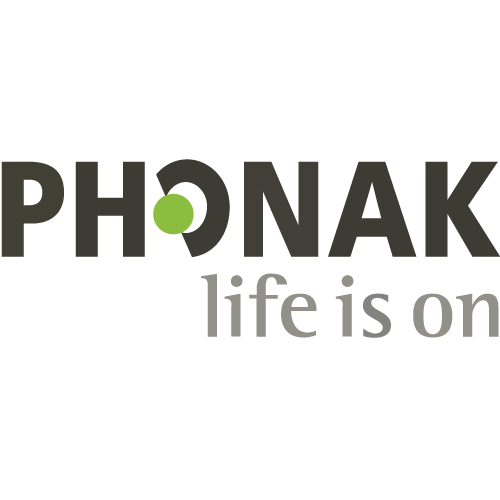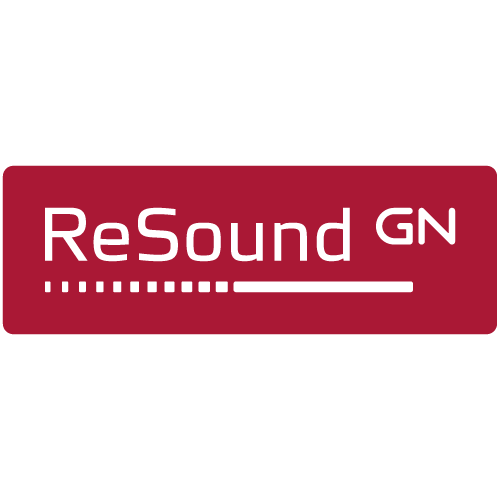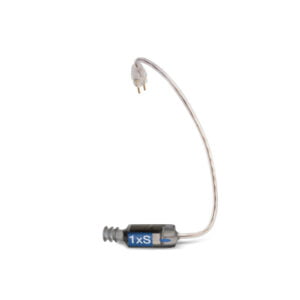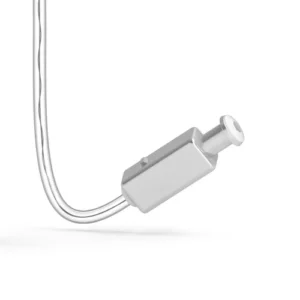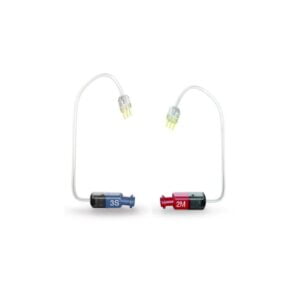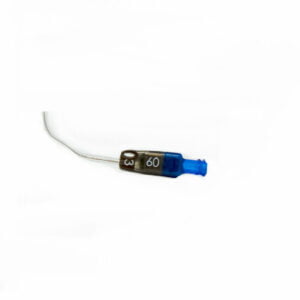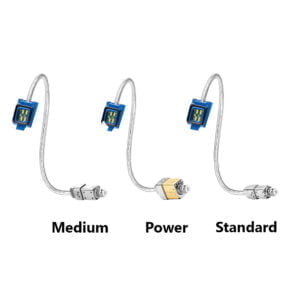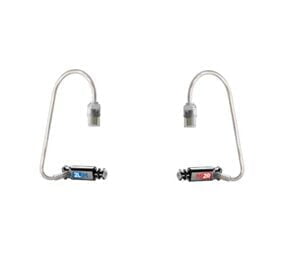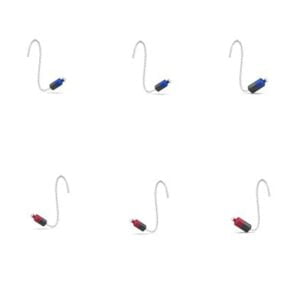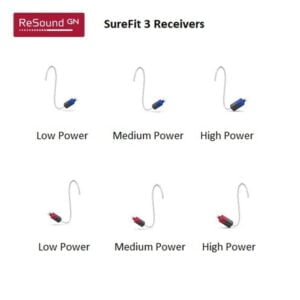Hearing Aid Receivers
Has your hearing aid suddenly gone quiet? A dead hearing aid receiver might be the culprit. Fortunately, Hearing Aid Accessories is here to help you get back to clear, reliable sound. We stock a wide range of receivers from all major brands, including Phonak, GN ReSound, Widex, and Oticon. No matter your hearing aid model, we have the right receiver to keep your hearing aid performing at its best.
Shop by brand or browse our full selection
-
Widex EASYWEAR™ Receivers V1
- $89.99
- Replacement Receivers for selected Widex receiver-in-canal and receiver-in-ear type hearing aid models. Use the drop down menu to chose size, ear and power of receiver required. Version 1 Widex Receivers receiver wires are identified by their matte grey colour. These are compatible with Widex Evoke RIC aids & Widex non-rechargeable aids. Brand : Widex
- Select options This product has multiple variants. The options may be chosen on the product page
-
Oticon MiniFit Receiver Speaker
- $74.99
- Oticon miniFit Receiver Speaker Keep your aids working at full capacity with brand new receivers for Oticon hearing aids. Use the drop-down menu to choose the required size, power and ear. Brand: Oticon Includes: 1xt Oticon miniFit Receiver Speaker
- Select options This product has multiple variants. The options may be chosen on the product page
-
Phonak 2 Pin xReceivers For RIC Hearing Aids
- $59.99
- The Phonak 2 Pin xReceivers are compatible with all Phonak hearing aids apart from Marvel & Paradise. The compatible hearing aids includes Belong, Venture, Quest & more! Each is available in various sizes and power levels. For Phonak Marvel & Paradise aid please CLICK HERE to be taken to the Phonak 3 Pin Receivers. For help in knowing which receiver…
- Select options This product has multiple variants. The options may be chosen on the product page
-
GN ReSound SureFit 2C Receivers
- $89.99
- SureFit 2 receivers are compatible with GN ReSound ENYA, LiNX², Linx3D, LiNX Quattro & Key receiver-in-canal hearing aids and are available in various sizes and power levels. For help in knowing which receiver to choose, your existing receiver may have all the answers: Each receiver is coloured coded and features printed numbers on the side. Select your size, power and…
- Select options This product has multiple variants. The options may be chosen on the product page
-
Phonak 4.0 Receivers For Marvel, Paradise & Lumity Hearing Aids (3 Pin)
- $59.99
- *Limited stock of the 4.0 receivers available while stocks last. These have now been phased out and replaced with the new Phonak 5.0 receivers. Click here to be redirected. The Phonak 4.0 Receivers (3 Pin Receivers) are compatible with Phonak Marvel, Paradise and Lumity Hearing Aids. For all other Phonak aids you would require the Phonak 2 Pin xReceivers.…
- Select options This product has multiple variants. The options may be chosen on the product page
-
Starkey Snap Fit RIC Receivers
- $69.99
- Replacement receivers for selected Starkey hearing aids. These Starkey Snap-Fit Receivers are compatible with Starkey LivioAI, Livio, Muse iQ, Muse, Halo iQ, Halo2, Halo, Z Series & 3 Series hearing aids. For help in knowing which receiver to choose your existing receiver may have all the answers. Each receiver is coloured coded and features printed numbers on the side. Select…
- Select options This product has multiple variants. The options may be chosen on the product page
-
Signia Mini Receiver 2.0 – Signia, Siemens, Specsavers Advance, AudioService
- $54.99
- Signia Mini Receiver represents a new generation of RIC receivers. It is an advanced, updated product that maximises functionality, maintains outstanding flexibility and offers multiple size and power options. Brand: Signia This product includes: x1 receiver speaker wire
- Select options This product has multiple variants. The options may be chosen on the product page
-
Phonak Receiver Removal Tool
- $2.99
- Tool to help remove and insert the pins of your hearing aid housings and to operate the receiver locking mechanism. Includes: x1 Receiver Removal Tool
- Add to cart
-
Widex V.2 M Receivers – For Moment Re-chargeable Hearing Aids
- $89.99
- Widex V.2 M Receivers. Replacement Receivers for Widex Moment Rechargeable hearing aids. Use the drop down menu to chose size, ear and power of receiver required. Brand : Widex
- Select options This product has multiple variants. The options may be chosen on the product page
-
GN ReSound ONE SureFit 3 Receivers
- $89.99
- The SureFit 3 receivers are compatible with GN ReSound ONE hearing aids and are available in various sizes and power levels. For help in knowing which receiver to choose your existing receiver may have all the answers. Each receiver is coloured coded and features printed numbers on the side. Select your size, power and ear below. Brand: GN Resound Includes:…
- Select options This product has multiple variants. The options may be chosen on the product page
-
Phonak Slim Tube HE – Tubes for Hearing Aids
- $11.99
- Phonak SlimTubes reduce visibility whilst being worn on the ear and include an attached retention lock. Brand: Phonak This product includes: x1 pack of 2 HE SlimTubes
- Select options This product has multiple variants. The options may be chosen on the product page
-
- Out of Stock
Signia Mini Receiver 3.0
- $69.99
- Enjoy fantastic sound clarity and performance with the Signia 3.0 mini receiver, the newest in the Signia portfolio, specifically designed for the latest Signia hearing aids. Brand: Signia Includes: x1 Receiver Wire
- Select options This product has multiple variants. The options may be chosen on the product page
-
FAQ
What is a receiver on a hearing aid?
A hearing aid receiver is a crucial component that processes sound from the microphone. It converts sound waves into electrical signals, which are then amplified and transmitted to your ear, ensuring clear and precise sound based on your level of hearing loss.
How do I replace my hearing aid receiver?
Replacing your hearing aid receiver involves several steps:
- Remove the old receiver: Use the receiver removal tool provided by your manufacturer (such as the Oticon Receiver Removal Tool).
- Attach the new receiver: Align the new receiver with your hearing aid and securely attach it.
- Check the fit: Ensure the receiver is properly fitted and comfortable.
How often do you need to replace a hearing aid receiver?
The frequency of replacing a hearing aid receiver depends on usage and maintenance. Generally, you should consider replacing the receiver every 6-12 months or if you notice a decline in sound quality.
Can any receiver fit my hearing aid?
No, each manufacturer has specific receiver styles and specifications. It’s important to purchase the correct receiver for your hearing aid model. Brands like Phonak, Oticon, and Widex have their own receiver designs.
How does a hearing aid receiver work?
A hearing aid receiver gathers electrical signals from the amplifier and converts them into sound. The microphone picks up sound, which is then amplified and transmitted to the receiver, delivering it to your ear.
What are the different styles of hearing aid receivers?
Receiver-in-Canal (RIC):
- Popular for its small size and ease of replacement. It features a thin wire over the ear and offers greater freedom and discretion.
- Easy to replace, can be done without an audiologist, and offers a sleek design.
In-the-Ear (ITE):
- Placed directly in the ear canal, offering maximum discretion and a custom fit.
- Nearly invisible, custom-fit, and recommended for various levels of hearing loss.
Behind-the-Ear (BTE):
- Traditional model suitable for all types of hearing loss. It is powerful and offers long battery life.
- Universal fit, long battery life, easy to handle, and offers various customisation options
How do I know when to get a new hearing aid receiver?
To check if your hearing aid receiver needs replacing, gently squeeze the hearing aid tube. If it quickly returns to shape, it’s fine. If it remains bent, it needs replacing to maintain sound quality.
What causes hearing aid receivers to fail?
Wax and moisture are the main culprits for receiver failure, as they sit closest to the ear. Regular maintenance and cleaning can help prevent these issues.
How do I fit a hearing aid receiver?
- Measure: Measure the length from the top of your ear to the opening of your ear canal using an ear ruler.
- Fit: Ensure the receiver is not too loose or too tight and check the power level for your hearing loss.
- Check: Verify the receiver’s number, letter, and colour to ensure it matches your hearing aid.
What tools will I need for hearing aid receiver maintenance?
- Receiver Removal Tool: For detaching the old receiver.
- Pliers: For shaping and guiding the receiver into place.
- Tubing Extractor: For removing the earmold.
- Tubing Threader: For threading the tubing through the earmold.
- Glue: If needed, to secure the new receiver (ensure it is suitable for hearing aids).
What sizes are Phonak receivers available in?
Phonak receivers come in various sizes and power levels to accommodate different levels of hearing loss and ear shapes. Here’s a breakdown of the different types:
- S – Standard Receivers: These are the least powerful and are used for mild to moderate hearing losses. They are available in sizes 0, 1, 2, and 3.
- M – Medium Receivers: These provide a middle power level and are used for moderate to moderately severe hearing losses. They are available in sizes 0, 1, 2, and 3.
- P – Power Receivers: These are the most powerful and are used for moderately severe to severe hearing losses. They are available in sizes 0, 1, 2, and 3.
It’s essential to consult with your audiologist to determine the correct receiver size and power level for your specific needs.
What should I do if my hearing aid stops working?
If your hearing aid stops working, it may be due to a faulty receiver. Consult your audiologist to diagnose the issue. Avoid tinkering with the hearing aid yourself to prevent voiding the warranty.

